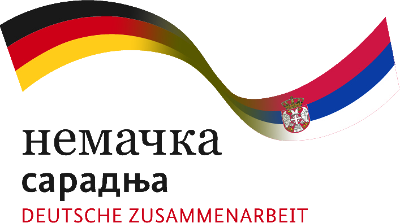19 December 2018
EU strategy for a climate-neutral Europe by 2050 revealed
In the run up to the UN Climate Conference COP 24, which took place in Katowice, Poland, on 3-14 December 2018, the EU, considered as a global leader in climate action, published its proposal for a climate-neutral Europe by 2050 A Clean Planet for all: A European strategic long-term vision for a prosperous, modern, competitive and climate neutral economy.
Climate neutrality is a state in which all actions, including those of an individual, organisation, city or state, result in net-zero climate impact. The aim of the EU’s long-term strategy is to present a vision that can lead to the achievement of net-zero greenhouse gas emissions by 2050 through a socially-fair transition in a cost-efficient manner. It identifies main challenges, but also emphasises the opportunities that this transformation can bring to the European economy and its citizens.
The strategy is not introducing new policies, nor does the European Commission intend to revise the agreed 2030 climate and energy targets of the Renewable Energy Directive of June 2018. It rather provides the direction and a number of solutions that the EU could pursue to achieve the objectives of the Paris Agreement in line with the UN Sustainable Development Goals.
Pathways for a transition to a net-zero economy
A set of eight pathways (scenarios) is assessed, based on existing - though in some cases emerging - solutions and is wide enough to offer alternatives to convince policymakers and citizens that a net-zero greenhouse gas emissions economy can be reached by 2050. The assessment is built on input from and a broad range of stakeholders, including the scientific research community, non-governmental organisations, think thanks and businesses. It is also based on an integrated modeling allowing a better understanding of complex interactions between the concerned sectors.
Reaching net-zero greenhouse gas emissions will require maximising the potential of technological and circular economy options, large scale deployment of natural land-based carbon sinks, including in the agricultural and forestry sectors, as well as shifts in mobility patterns. Therefore the road to a net-zero greenhouse gas economy urges for joint action in seven priority areas:
- Maximising the benefits of energy efficiency, including zero emission buildings
- Maximising the deployment of renewables and the use of electricity to fully decarbonise Europe’s energy supply
- Embracing a clean, safe and connected mobility
- Enabling the EU’s industry and circular economy to be a key player in the reduction of greenhouse gas emissions
- Developing an adequate smart network infrastructure and inter-connections
- Reaping the full benefits of bio-economy and creating essential carbon sinks
- Tackling remaining CO2 emissions with carbon-capture and -storage
KeepWarm´s contribution to the achievement of climate neutrality
When it comes to district heating system renovation, the proposed strategy outlines that energy-efficiency measures, both on the supply and the demand side, should play a central role in reaching the 2050 goal. Therefore, retrofitting existing distribution networks is considered to be crucial to reduce energy losses. The EU strategy also mentions that a majority of homes should be using district heating systems running on renewable energy sources. Moreover, when replacing ageing infrastructure, smart networks and sector integration are recommended in order to achieve the decarbonisation objective.
KeepWarm, through project preparation, knowledge exchange and policy integration activities, is on the right track to raise the ambition of current district heating renovation in Eastern and Central Europe. The project is aligned with the EU 2050 climate strategy goals. However, each country, region or city has to aim towards achieving higher energy standards and implementing them when taking decisions for investment in more advanced heating systems.
Furthermore, EU member states are expected to submit their draft National Climate and Energy Plans to the European Commission by the end of 2018. They are central for the achievement of the 2030 climate and energy targets and should take into account the EU long term strategy.
KeepWarm will assess how its target countries address distrct heating retrofitting challenges in their local, regional and national strategies and encourage their proper integration in forthcoming policy documents, as well as the development of national or regional action plans for district heating renovation.
European flags flying in front of the Berlaymont by "TPCOM"



